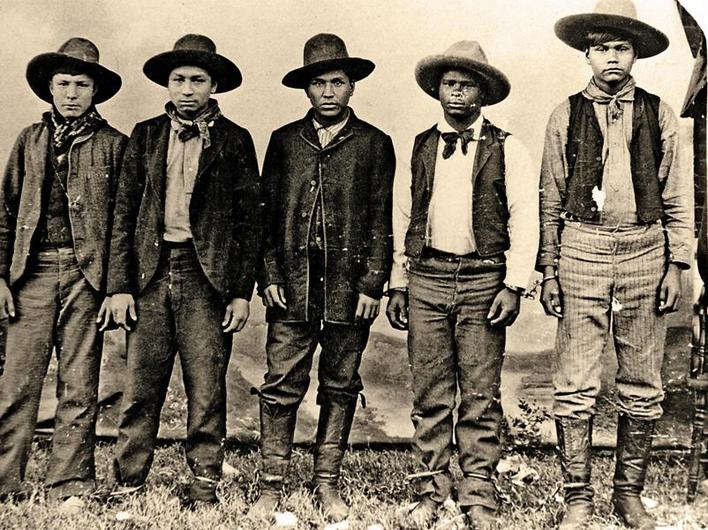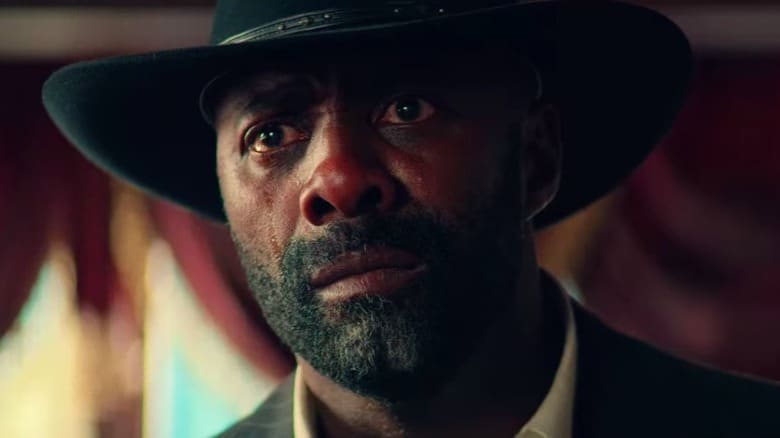Last updated on January 12th, 2023 at 10:55 pm
The Rufus Buck Gang was a group of outlaws who terrorized the Midwest during the late 1800s. They were some of the most notorious criminals in American history and the inspiration for numerous books and movies.
Who were the Rufus Buck Gang, and how did they earn their notorious reputation?

The Loss of Indian Territory in the United States
There’s no question: indigenous people in the United States have been dealt a raw deal. In 1887, President Grover Cleveland and the U.S. government passed the Dawes Act. This law affected tribal lands everywhere and stripped Native Americans of their freedom and culture.
The law was designed to “assimilate” Native Americans into white society, but it did anything but that. The Dawes Act resulted in the loss of over 90 million acres of Indian land, forcing many indigenous people onto reservations. Through this legislation, the United States government created a rank of second-class citizens.
Often, the land returned to them from the Dawes Act was unfit for farming and a fraction of what they had lost.
It’s no wonder, then, that some Native Americans turned to a life of crime. They had lost their land, freedom, and way of life. And so, in 1890, a group of Native American criminals came together to form the Rufus Buck Gang. The Rufus Buck Gang comprised mainly Cherokee and Creek people affected by this act
The gang was borne out of the indigenous people’s hate and fury of the colonials who robbed them of their lands.
Who Was the Rufus Buck Gang?
The Rufus Buck Gang was a group of African American, Mixed race (Black and Indian), and Native American outlaws who operated in the Indian Territory, also known as Oklahoma. The gang consisted of five members: Rufus Buck, Lewis Davis, Sam Sampson, Maoma July, and Lucky Davis. Rufus Buck was the leader of the gang and was considered quite dangerous.
It’s important to mention that the band was made up of teenage boys and young men who had grown up during a time of great turmoil for the indigenous population of the United States.

Their families raised them, knowing how they had lost the sacred lands. This led to anger and resentment towards the government and white people in general. The loss of their culture angered Rufus Buck and his gang and created harsh vigilantes with a goal in mind.
While Native Americans were being forced off their land and losing their way of life, Rufus Buck formed his gang. They took advantage of the region’s socio-political mess by preying on whites and Native Americans.
In the late 19th century, the Indian Territories were swamped with more White settlers than Native Americans and black Freemen. Rufus Buck and his gang wanted revenge for losing his people’s homeland. They would come to utilize the harsh brutality and violence their people endured throughout history.
What Did the Rufus Buck Gang Do?
During Rufus Buck Gang’s short spree, they were responsible for many crimes, including murder, robbery, and rape.
One of their first crimes was when they robbed a Fort Smith grocery store in Arkansas. The U.S. deputy marshal John Garrett was the first on the scene and was quickly shot by the gang.
The following day they came across a white man and his daughter in a wagon. They held him at gunpoint and kidnapped and raped his daughter. She later succumbed to her injuries.
Unfortunately, their terrible antics didn’t stop there. The gang robbed many more stores and ranches for the next two weeks. Determined to encourage indigenous people to rise and overthrow their oppressors, the Rufus Buck gang continued their rampage.
They continued their robberies by abusing and stealing from Ben Callahan but gave him a chance to escape if he could run. They also killed another man named Gus Chambers, who resisted their efforts to steal his horses. Yet his efforts were in vain as the Rufus Buck Gang continued their crime spree.
If all of that wasn’t enough to make your skin crawl, there’s more. The gang employed violence regularly and raped Rosetta Hansen while holding her husband at gunpoint.
The Consequences
On August 10, 1895, U.S. Marshalls and the Creek Lighthouse police members finally caught up to the notorious Rufus Buck gang. A gunfight that lasted nearly a day occurred between the two opposing sides.
Once the gang realized they were in over their heads, they surrendered. All of the Rufus Buck gang members were arrested and taken into custody. After all the terror they had inflicted, you would think they would earn a death sentence.
So, it made sense when many citizens of all backgrounds called for them to be lynched. The Rufus Buck Gang’s mission was to rally support from indigenous people, African Americans, and mixed races. Unfortunately, this did not happen. Instead, most speculated that a quick case was just a formality.
Judge Issac Parker, also known as the Hanging Judge, dealt with the gang’s court case and onn July 1, 1896, the Rufus Buck Gang was executed in Fort Smith, Arkansas.
The Next Generation
The Rufus Buck Gang’s story is of tragedy, rage, and consequences. It’s hard to imagine growing up during a time when your family or friends were persecuted for the color of their skin. However, the Rufus Buck gang’s story reminds us that violence is never the answer. What they did was inexcusable, and no one should ever have to go through what their victims went through.
We can only hope that their story will warn future generations and help create a more just and peaceful world. Although their crime spree was short-lived, history will never forget the terror they inflicted. Unfortunately, the Rufus Buck gang members met a fate that many thought was too good for them.


Violence itself isn’t wrong, it’s all about how it’s defined and where it’s directed.
For example, blowing up a pipeline is morally defensible, but legally considered violence.